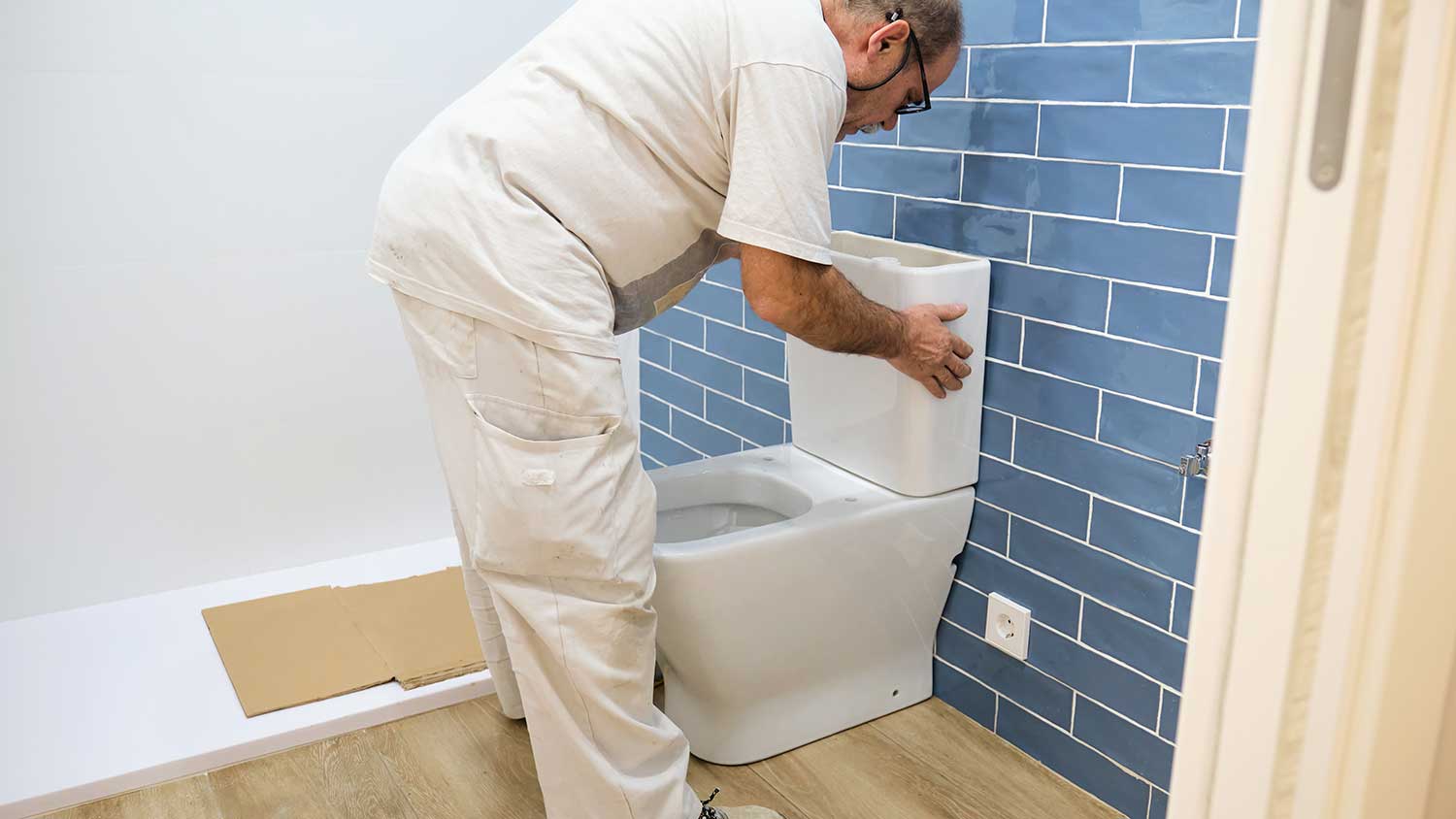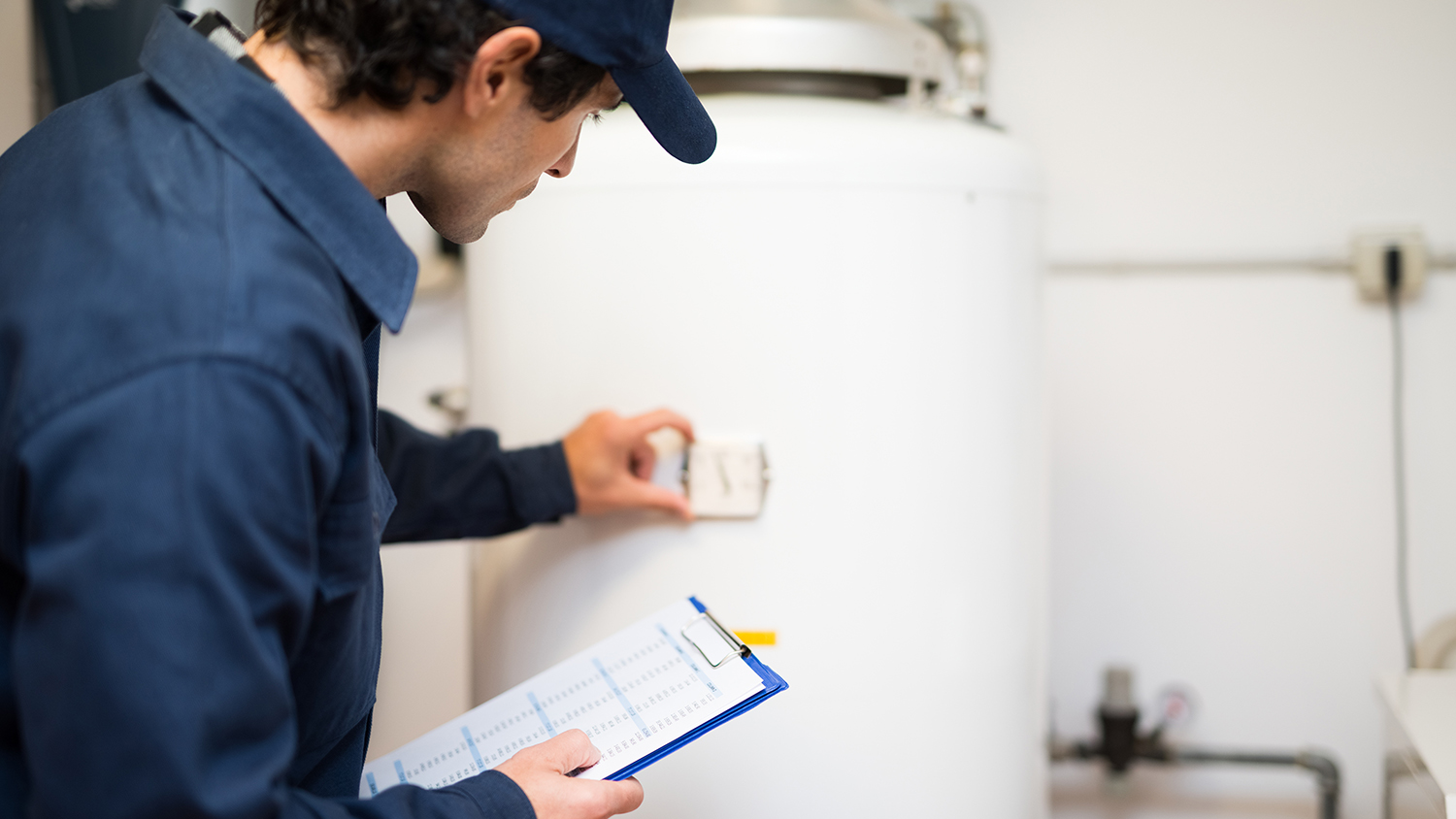
Looking to remodel your shower? Here’s how much it costs, what factors affect cost, and what to expect.
Drain cleaning costs an average of $242.


Replacing your kitchen countertops will cost you about $242, with most projects costing between $147 and $346.
The cost to replace kitchen countertops depends on the size, edge treatments, and the materials you use.
Certain materials, such as laminate, are inexpensive but don’t last as long as more premium, pricy materials, such as granite or marble.
Replacing kitchen countertops is a good, relatively low-cost way to boost your home’s value, with as much as 98.5% ROI .
You can reduce the cost of installing new kitchen countertops by removing old countertops yourself, opting for simpler edge treatments, choosing a less expensive material, and limiting curves and irregular shapes.
This article was updated using automation technology and thoroughly reviewed for accuracy by HomeAdvisor Editor Ryan Noonan.
Few things stall a busy morning faster than a sluggish sink. On average, drain cleaning runs about $242, with most jobs falling between $147 and $346. What you’ll pay hinges on where the clog sits, how stubborn it is, and how often the line backs up. Planning ahead—and bringing in a licensed pro—helps you sidestep repeat blockages and pricier plumbing repairs down the road.
Not every clogged drain is the same, and neither is the fix. The cost to unclog a drain depends on many things, including the severity of the clog, the location in the home, the initial cause, and the methods a plumber uses to clear it. Hire a local plumber to inspect the problem and give you an accurate quote.
Light hair or soap gunk close to the drain usually clears in minutes. A dense grease plug or root invasion buried deep in the line demands more time—and a bigger bill—especially if your plumber charges by the hour. With a flat‑rate quote, you still pay more when the tech needs extra passes or a camera inspection to hunt down a stubborn obstruction.
Blockages love to hide at pipe bends and junctions. The farther that trouble spot is from an access point, the more hose or cable your plumber feeds through—and the more you’ll spend on labor. In short, a clog two feet from the sink is quicker (and cheaper) to clear than one buried halfway to the street.
Multiple backups in the same visit mean extra snaking time—or a separate flat fee for each clog. Ask your pro upfront how they bill. Ifthe same spots keep stopping up, schedule an inspection; it often signals a bigger issue hiding in the line.
Clearing multiple clogs can be a costly job involving a video line inspection to identify the location and cause of the blockage. In some cases, additional services may be required to remove root incursions or repair damage from rock or root penetrations.
Everyday offenders—soap scum, tangled hair, and wayward food scraps—clear out fast. Corroded pipes, invading tree roots, or crushed sections cost far more to fix because they often tack on repair work in addition to the clean‑out.
Plan on about $900 for a sewer‑scope alone; clearing the clog comes on a separate ticket. Pros break out the camera when snaking doesn’t solve the slowdown or when water still crawls after a clean‑out.
In that case, a video camera inspection can reveal the cause of the blockage, allowing pros to check the line for damage from root incursions or back-pitched sections.
Most plumbers reach for a heavy‑duty snake first—it tackles everyday clogs fast. When roots or thick buildup line the pipe, hydro‑jetting’s high‑pressure blast scours the walls clean but costs more because the gear and setup are bigger.
Each type of drain in your home requires a different amount of time–and, therefore, cost—to fix. For example, drain cleaning costs to clear a kitchen sink are typically less than clearing a shower drain. Additionally, the more serious the issue becomes, the more it costs to fix. Calling a plumber at the first sign of a drain problem is the most cost-effective solution.
Garbage‑disposal sinks rarely jam solid, but they do collect grease and food bits that slow the drain. Staying on top of simple cleaning keeps clogs at bay. If a blockage does form, expect $110–$215 to have a pro clear it out.
Toilets see more clogs than any other fixture, but most are quick fixes at roughly $110–$275. If flushes start to slow, call a plumber before a full backup turns your bathroom into a no‑go zone.
Hair plugs love to tangle in shower and tub drains. A pro usually charges about $225 to pull them free. Store‑bought chemicals might seem easier, but they’re hard on pipes and rarely solve the whole problem—mechanical removal with a snake or jet is safer and more thorough.
Clearing a main sewer line runs $100 to $800, largely based on where the clog sits. Root intrusion is the usual suspect. Regular hydro‑jetting keeps roots at bay, but sealing cracks—or swapping the line entirely—is the only permanent fix.
While slightly cracked drain lines can work fine for a long time with regular cleaning, replacing the drain to eliminate the cracks is the only definite way to permanently eliminate root intrusions. If you don’t clean out the roots regularly, they will make the tiny cracks larger.
While clearing a blockage or performing a video camera inspection, your drain cleaning pro may uncover problems that require extensive repair or replacement. Root incursions, rock penetrations, sagging pipes, and collapsed lines are all common causes of blockages that require major remediation.
Broken or cracked sewer line pipes cost an average of $1,300–$5,000 to fix.
Tree roots in the sewer line cost $100–$1,000 to fix, plus the cost of a video line inspection.
Collapsed line repair costs $50–$250 per linear foot. For extensive damage, replacing the whole line may be more cost-effective.
Trenching costs $400–$1,200 for standard depth lines. If your sewer line is deeper than average or close to other utilities, expect to pay up to $24 per linear foot.
Drain pipe replacement costs $200–$1,200, depending on the amount of piping you’re replacing, the location of the pipes, and how easy it is to access them.
Sewer trap replacement costs $200–$325 but depends on accessibility.
Bellied pipe repair costs $1,500–$3,000. Once the pipe starts to sag, you’ll likely need to replace it.
Drain work isn’t always cheap, but a few smart habits keep costs predictable and your pipes flowing:
Schedule preventative inspections once a year to catch potential issues early.
Utilize simple maintenance techniques like not pouring grease down drains to reduce the required frequency of professional cleaning.
Obtain at least three detailed estimates from reputable drain cleaning professionals to compare pricing.
Ask about bundled services to negotiate for overall cost savings.
Install drain screens for sinks, showers, and tubs to minimize debris buildup.
Invest in camera inspections when necessary to identify underlying issues.
No place is more important than your home, which is why HomeAdvisor connects homeowners with local pros to transform their houses into homes they love. To help homeowners prepare for their next project, HomeAdvisor provides readers with accurate cost data and follows strict editorial guidelines. We surveyed over 30,000 real customers about their project costs to develop the pricing data you see, so you can make the best decisions for you and your home. We pair this data with research from reputable sources, including the U.S. Bureau of Labor Statistics, academic journals, market studies, and interviews with industry experts—all to ensure our prices reflect real-world projects.
From average costs to expert advice, get all the answers you need to get your job done.

Looking to remodel your shower? Here’s how much it costs, what factors affect cost, and what to expect.

Wondering who repairs undermount sinks? See when to call a countertop specialist or plumber, what to expect, and typical repair costs

Learn who to call for a water main break. See why a licensed plumber is best and what repairs cost so you can act fast

Find who to call to replace a toilet—plumber vs. handyperson—plus steps, timing, and costs. Learn how pros prevent leaks and protect your bathroom

Who fixes water heaters? Learn who to call—plumbers or electricians—and what to expect so you can hire the right pro today.

Wondering who fixes tankless water heaters? See who to call for tankless water heater repair and when an electrician is appropriate.